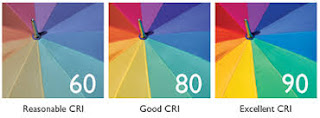Introduction To Lighting Controls
Introduction
Lighting controls play a critical role in electric lighting systems, providing the functions of
- turning the lights on and off using a switch;
- Adjusting light output up and down using a dimmer.
In recent decades ,technological development has increasingly automated these functions and allowed integration of devices into larger ,more flexible systems.The result is significantly expanding energy saving opportunities,flexibility reliability and inter operability between devices from different manufacturers.
A good Lighting design includes a good controls design.
The goal of an effective controls design is to provide for eliminating energy waste while providing a productive visual environment.A Lighting controls system or device is an appartus that 1) receives information 2) decides what to do with the information 3) changes the operation of the lighting system.
A robust Lighting control system provides a control station, occupancy sensor,photosensor and time switch or centralized switching system with inputs and the output is provided to the Lighting Load.
Purposes Of Lighting Controls
- Providing the right amount of light
- Providing that Light where it is needed
Lighting controls provide flexibility in adapting the lighting system to different uses. Lighting controls and controllable ballasts provide the ability for users to adjust light levels based on changing needs or individual preference.
By establishing control zones lighting controls allow putting of light where its needed.
A switching system can be scheduled to automatically shut off the lights by area, by floor or in a entire area if a building's occupancy is predictable.
if occupancy is not predictable , a threshold event based strategy can be considered,for e.g the lights can be switched on or off based on the fact whether the sensor detects the presence or absence of persons in the area defined.
Lighting controls aid in Energy Management.
- Controls reduce the amount of power drawn by the lighting system during operation
- Controls also reduce the power drawn during peak energy demand period, when demand charges are highest.
The Right Control Strategy
The following questions should be asked before arriving at the right control strategy:
- What are the Load and space characterstics?
- What are the projects goals of the lighting systems?
- What is required by energy,building and electrical codes?
- Should the Load be switched or dimmed?
- What degree of automation is required?
- Should the lighting system be controlled locally or from a centralised location or both?
- What degree of control accuracy is required?
- Who will commission the control system?
- What is the target value level the balance between performance and cost?



Comments
Post a Comment